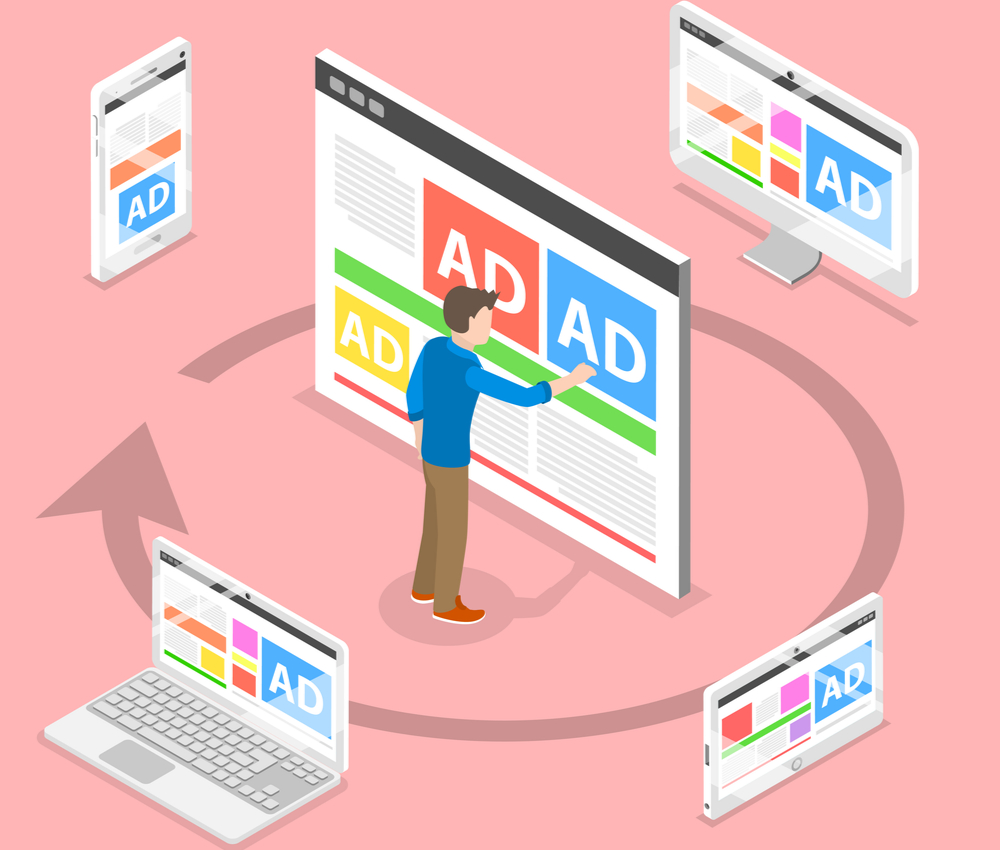What is Online Behavioral Advertising?
Online behavioral advertising (OBA) is sometimes called ‘interest-based advertising’ (IBA) and is the practice of collecting data from a particular computer or device (smartphone or tablet) regarding the internet-viewing behavior that occurs over time and across different internet properties or websites.
Data collection organisations and advertising companies enable this by placing ‘a cookie‘ on your computer (desktop or laptop) or device (iPad, mobile phone, etc).
This data is then used to infer particular ‘interests’ and ‘preferences’ that the user may have, in order to later deliver targeted advertising to that same computer or device. Interest buckets (categories) are built up of thousands and thousands of consumers based upon the websites that they have spent time on.
The cookies piece together a profile of user interests, hobbies, browsing habits and possible purchase intentions. This is very valuable information for marketers and their advertising agencies.
The theory is that, by using this behavioral data to subsequently deliver targeted advertising, there is a dual benefit of advertising being more effective for the marketer, whilst also being more relevant, interesting and useful for the viewer.
The ads delivered are, in theory, smarter, because they are based upon ‘known’ behaviors and interests.

It is important to understand that the ads you see on most websites have not been placed there directly by the publisher themselves. Most of the ads have been delivered by an online advertising network (of which Google is the biggest). These ad networks place ads on thousands of sites across the internet and may be able to track your browsing activity as you traverse the web.
The ad you see is often aimed directly at your browser, based upon your previous online behavior, which has signalled to the ad-server to trigger a specific ad at a particular moment. The ads that you and I see (at the same time and on the same webpage) are likely to be completely different.
Been to a number of shoe sites? Then expect to see ads for shoes following you around. Visited a car website? You’ll likely be put in an “auto intender” bucket and be served many ads for cars.
The decision-making algorithm in the ad server makes these calls thousands of times a second all over the internet, every single minute of every single day.
How to opt out of Online Behavioral Advertising (OBA)
Opting out of interest-based targeted advertising is possible. This, however, does not mean that you will no longer receive ads when you are browsing online.
It simply means that the advertising you see will not be tailored to your interests nor online browsing behaviour from those companies that have signed onto what is largely a self-regulatory program. (In fairness, signatories do include the majority of the major participants in the worldwide online advertising industry).
Opting out of online behavioral advertising with Google, Meta (Facebook, Instagram) and Twitter can be done by going directly to your account settings.
Alternatively, you can visit certain sites set up for the purpose and do a blanket opt-out for the organisations who signed up to the industry-wide coalition to develop self-regulatory principles and practices for OBA.
There are more than 80 providers who work with websites to collect and use information to provide behavioral/ interest-based advertising.
All can be turned on or off, depending on your preferences. This is an easy one-step process:
- Firstly, select and click the turn-off link next to the business that you wish to turn off OBA. This process should only take a few seconds and can be repeated for each company you select. It can be reversed at any time in the future by returning to the website and going back through each individual selection from the participating websites.
- Alternatively, click on the ‘turn off all companies’ button if you wish to turn off all OBA from all of the businesses listed. This can be reversed at any time by going back in and selecting ‘turn on to all companies’ to choose to receive the OBA.
- When you opt out of receiving targeted interest-based ads, this information is generally saved on a cookie. Be aware, that this can mean that if you clear your cookies, then you’ll likely have to opt out again.
What is not included in OBA opt-outs
- Activities of first parties (website publishers) that are limited to their own (and affiliated) websites. These operators can still utilise user behaviors and habits whilst on their websites to serve targeted advertising at the user.
- Standard advertising delivery (ie the serving of online ads or ad-related services using ad reporting data). This is the ‘vanilla’ delivery of online advertising that has not been based upon behavioral or interest information collected over time and across non-affiliated websites.
- Ad reporting statistics, advertising metrics and web analytics.
- Contextual advertising, whereby advertising is served based upon the context of the website or webage being visited at the current time.
Further information on opting-out of OBA and interest-based advertising (IBA) can be found in our article here.
To Opt Out
To reiterate, “opting out” means that you want third-party advertising platforms to limit the information collected and stored about your computer or device and to not target ads that are based on your interests to your browser or device.
If you use multiple browsers, computers or mobile devices, and wish to limit the information collected and stored or do not wish to receive interest-based advertising on any of them, you must opt out from each browser, computer, and mobile device individually.
Please note that if cookies are not enabled in your browser, or if you use certain ad-blocking tools, the opt-out mechanism may not work properly. Please also remember that deleting your cookies does not opt you out.
Links for opting out
You may opt out of interest-based advertising from online advertising companies that are members of applicable self-regulatory organizations by visiting their opt-out links:
Network Advertising Initiative (NAI) – http://optout.networkadvertising.org/
Digital Advertising Alliance (DAA) – http://optout.aboutads.info/
Digital Advertising Alliance Canada (DAAC) – http://youradchoices.ca/choices
Digital Advertising Alliance EU (EDAA) – http://www.youronlinechoices.com/
DAA AppChoices page – http://www.aboutads.info/appchoices
Opting out in the mobile application environment
It is also possible to limit ad tracking in mobile app environments on your device.
You may opt out in mobile app environments using the “AppChoices” mobile application, which you can download to your mobile device from your App Store or via the Digital Advertising Alliance AppChoices page here.
Things change rapidly in the mobile environment. It may be worthwhile to periodically consult the latest instructions from the major mobile manufacturers,
At the time of writing (January 2022), the methods below are the most current, but we cannot guarantee that they will remain so:
Apple instructions for how to Limit Ad Tracking on devices such as iPhones and iPads
Google instructions for how to express choice on Android devices
- IPSec vs. OpenVPN: Which Is Better? - December 10, 2022
- How to Turn Off VPN on Mac: A Step-by-Step Guide - December 10, 2022
- What Is a VPN Concentrator and What Does It Do? - December 10, 2022



![How To Change Your Location In Pokémon Go [Super Easy Hack] How To Change Your Location In Pokémon Go [Super Easy Hack]](https://youronlinechoices.com.au/wp-content/uploads/2021/09/How-to-change-your-location-in-Pokemon-Go.jpg)

